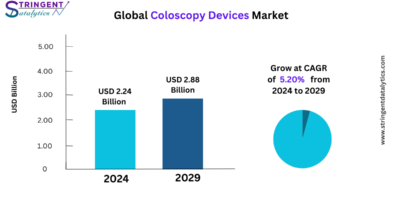Epilepsy Drug Market size was valued at $7 billion in 2022, and is projected to reach $9.8 billion by 2032, growing at a CAGR of 3.5% from 2023 to 2032.
The epilepsy drug market involves pharmaceutical products used for the treatment of epilepsy, a neurological disorder characterized by recurrent seizures. These drugs, also known as antiepileptic drugs (AEDs) or anticonvulsants, are designed to control seizures, reduce their frequency and severity, and improve patients’ quality of life. Here’s an overview of this market, including its size, growth, trends, and challenges:
Overview:
Epilepsy drugs work by stabilizing electrical activity in the brain and preventing abnormal, excessive neuronal firing that leads to seizures. These medications are prescribed based on factors such as seizure type, frequency, patient age, and comorbidities. The goal of epilepsy treatment is to achieve seizure control while minimizing side effects and improving patient adherence to medication regimens.
Market Size and Growth:
- The global epilepsy drug market is substantial and continues to grow due to several factors:
- High Prevalence of Epilepsy: Epilepsy is one of the most common neurological disorders worldwide, affecting millions of people of all ages, which drives the demand for effective antiepileptic medications.
- Advancements in Drug Development: Ongoing research and development efforts in epilepsy therapeutics lead to the discovery of novel drug targets, formulations, and mechanisms of action, expanding the treatment options available to patients.
- Increasing Awareness and Diagnosis: Growing awareness about epilepsy, coupled with improved diagnostic techniques and healthcare access, results in earlier diagnosis and treatment initiation, driving market growth and demand for epilepsy drugs.
Market Trends:
- New Drug Approvals: The introduction of new antiepileptic drugs with novel mechanisms of action, improved safety profiles, and convenient dosing regimens offers additional treatment options and benefits for patients with refractory epilepsy or medication intolerances.
- Personalized Medicine: Advances in pharmacogenomics and biomarker research enable personalized treatment approaches, allowing healthcare providers to tailor epilepsy therapy based on individual patient characteristics, genetic factors, and drug responses.
- Emerging Therapies: The development of adjunctive therapies, combination drug regimens, and non-pharmacological treatments such as medical devices and surgical interventions broadens the therapeutic armamentarium for managing drug-resistant epilepsy and optimizing seizure control.
- Generic Competition: Patent expirations and generic competition for branded epilepsy drugs contribute to cost savings for patients and healthcare systems, increasing access to affordable treatment options and driving market competition.
Challenges:
- Drug Resistance: Approximately one-third of patients with epilepsy have drug-resistant seizures that do not respond adequately to available antiepileptic medications, posing challenges in achieving seizure control and optimizing treatment outcomes.
- Adverse Effects: Antiepileptic drugs are associated with a range of adverse effects, including cognitive impairment, sedation, dizziness, gastrointestinal disturbances, and metabolic abnormalities, which may affect patient adherence, quality of life, and long-term treatment outcomes.
- Comorbidities: Epilepsy often coexists with other medical and psychiatric conditions such as depression, anxiety, cognitive impairment, and sleep disorders, necessitating comprehensive treatment strategies and multidisciplinary care approaches.
- Treatment Gaps: Disparities in epilepsy care, inadequate access to specialized healthcare services, and socioeconomic barriers to medication adherence contribute to treatment gaps and suboptimal seizure control in certain populations, particularly in underserved communities and resource-limited settings.
Future Outlook:
The epilepsy drug market is expected to witness continued growth and innovation, driven by advancements in drug development, personalized medicine approaches, and the emphasis on multidisciplinary epilepsy care. Efforts to address challenges related to drug resistance, adverse effects, comorbidities, and treatment disparities will shape the future landscape of epilepsy therapeutics. Advances in precision medicine, targeted drug delivery, and non-pharmacological interventions hold promise for improving seizure control, reducing treatment burden, and enhancing the quality of life for patients living with epilepsy.
Click Here, To Get Free Sample Report https://stringentdatalytics.com/sample-request/epilepsy-drug-market/15445/
Market Segmentations:
Global Epilepsy Drug Market: By Company
Pfizer
Eisai
Novartis
Sanofi
Union Chimique Belge
Abbott
GlaxoSmithKline
Sunovion Pharmaceuticals
Teva Pharmaceutical
Johnson & Johnson
Abbvie
Janssen Pharmaceuticals
Cephalon
Global Epilepsy Drug Market: By Type
First Generation Drugs
Second Generation Drugs
Third Generation Drugs
Global Epilepsy Drug Market: By Application
Hospital
Clinic
Others
Global Epilepsy Drug Market: Regional Analysis
The regional analysis of the global Epilepsy Drug market provides insights into the market’s performance across different regions of the world. The analysis is based on recent and future trends and includes market forecast for the prediction period. The countries covered in the regional analysis of the Epilepsy Drug market report are as follows:
North America: The North America region includes the U.S., Canada, and Mexico. The U.S. is the largest market for Cold-chain Pharma in this region, followed by Canada and Mexico. The market growth in this region is primarily driven by the presence of key market players and the increasing demand for the product.
Europe: The Europe region includes Germany, France, U.K., Russia, Italy, Spain, Turkey, Netherlands, Switzerland, Belgium, and Rest of Europe. Germany is the largest market for Cold-chain Pharma in this region, followed by the U.K. and France. The market growth in this region is driven by the increasing demand for the product in the automotive and aerospace sectors.
Asia-Pacific: The Asia-Pacific region includes Singapore, Malaysia, Australia, Thailand, Indonesia, Philippines, China, Japan, India, South Korea, and Rest of Asia-Pacific. China is the largest market for Cold-chain Pharma in this region, followed by Japan and India. The market growth in this region is driven by the increasing adoption of the product in various end-use industries, such as automotive, aerospace, and construction.
Middle East and Africa: The Middle East and Africa region includes Saudi Arabia, U.A.E, South Africa, Egypt, Israel, and Rest of Middle East and Africa. The market growth in this region is driven by the increasing demand for the product in the aerospace and defense sectors.
South America: The South America region includes Argentina, Brazil, and Rest of South America. Brazil is the largest market for Cold-chain Pharma in this region, followed by Argentina. The market growth in this region is primarily driven by the increasing demand for the product in the automotive sector.
Reasons to Purchase this Report
- Market segmentation based on qualitative and quantitative analysis, taking into account both economic and non-economic aspects.
- Data on market value (in US dollars) for each section and sub-segment
- Identifies the area and market segment anticipated to experience the quickest growth and hold the majority of the market.
- Analysis by geography showcasing product/service usage in the region and highlighting the market dynamics affecting each region.
- A competitive landscape that takes into account recent service/product launches, collaborations, company expansions, and acquisitions by the companies profiled, as well as the market share of the leading players.
- Comprehensive company profiles for the top players in the industry, including business overviews, corporate insights, product benchmarking, and SWOT analyses
- The industry’s future market forecast in light of recent changes, including growth possibilities, drivers of growth, and obstacles present in both developing and emerging economies.
- Comprises a thorough examination of the market from a number of angles using Porter’s Five Forces analysis.
- Offers market knowledge across the Value Chain
- The current market dynamics scenario and future market expansion prospects
- Post-sales analyst assistance for six months
Click Here, To Buy Premium Report https://stringentdatalytics.com/purchase/epilepsy-drug-market/15445/?license=single
About Stringent Datalytics
Stringent Datalytics offers both custom and syndicated market research reports. Custom market research reports are tailored to a specific client’s needs and requirements. These reports provide unique insights into a particular industry or market segment and can help businesses make informed decisions about their strategies and operations.
Syndicated market research reports, on the other hand, are pre-existing reports that are available for purchase by multiple clients. These reports are often produced on a regular basis, such as annually or quarterly, and cover a broad range of industries and market segments. Syndicated reports provide clients with insights into industry trends, market sizes, and competitive landscapes. By offering both custom and syndicated reports, Stringent Datalytics can provide clients with a range of market research solutions that can be customized to their specific needs.
Contact Us
Stringent Datalytics
Contact No- +1 346 666 6655
Email Id- sales@stringentdatalytics.com




Leave a Reply